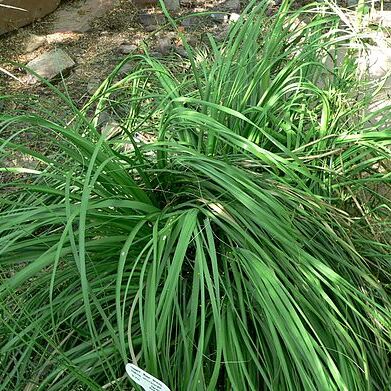Plants acaulescent, cespitose; rosettes from vertical, subterranean, branched caudices. Leaf blades wiry, lax, concavo-convex, 80–130 cm ´ 5–12 mm, not glaucous; margins serrulate, with close-set, cartilaginous teeth; apex lacerate; inflorescence leaf blades curling distally, 10–50 cm. Scape 3–15 dm, 1.2–2.5 cm diam. Inflorescences paniculate, 4–12 dm × 10–30 cm, surpassing leaves; bracts caducous, rarely persistent; bractlets 2–5 mm, slightly erose. Flowers: tepals white, 1.5–3.3 mm; fertile stamens: filaments 1.6–1.9 mm, anthers 1.2–1.4 mm; infertile stamens: filaments 0.9–1.2 mm, anthers 0.3–0.5 mm; fruiting pedicel erect, proximal to joint 1–2 mm, distal to joint 3–6 mm. Capsules hyaline, thin-walled, inflated, 4.2–6 × 5.4–6.4 mm, indistinctly notched at apex. Seeds loosely invested in capsules, compressed, 2.2–3.4 × 1.5–3 mm. 2n = 38.
More
A herb or small shrub with spiky leaves from the top. It grows 1.5 m high and spreads 1.2 m wide. The leaves arch over and are grass like. They have fine teeth along the edge. The leaves form dense tufts. The flower panicle can be 2 m tall. The flowers are pale cream and small.
Caution: Some Nolina species are poisonous. The stalks are roasted, boiled or eaten raw. They can also be dried and stored. The seeds are made into a meal and used to make bread. The fruit are eaten fresh and preserved.

